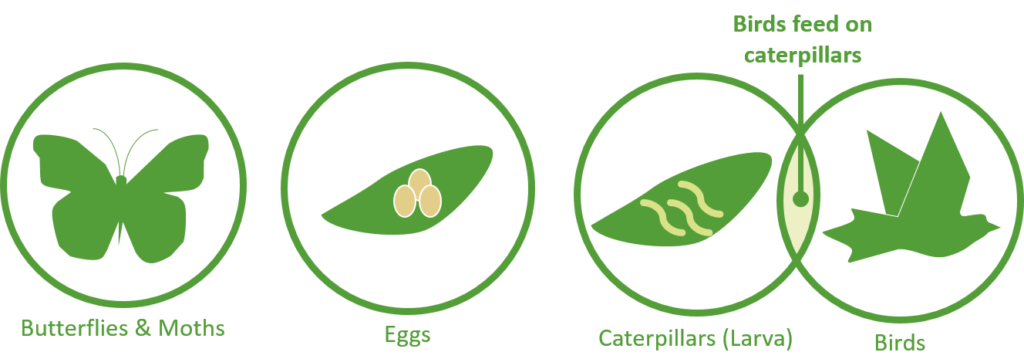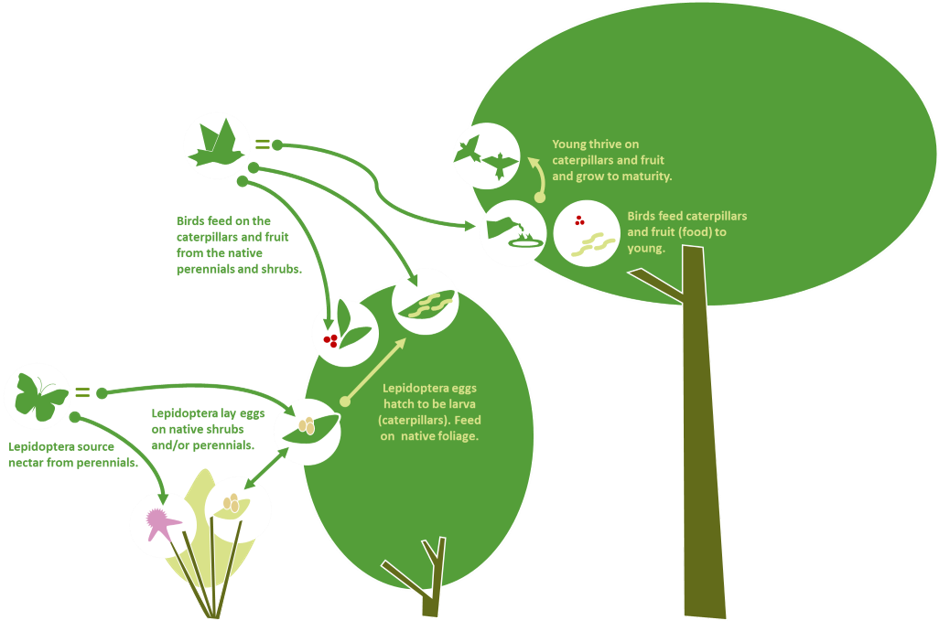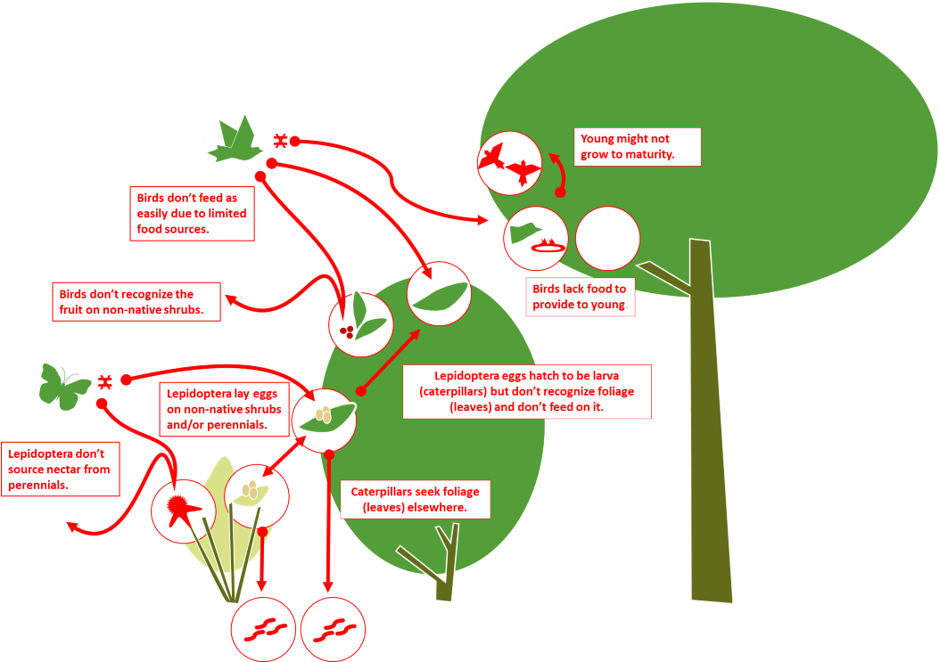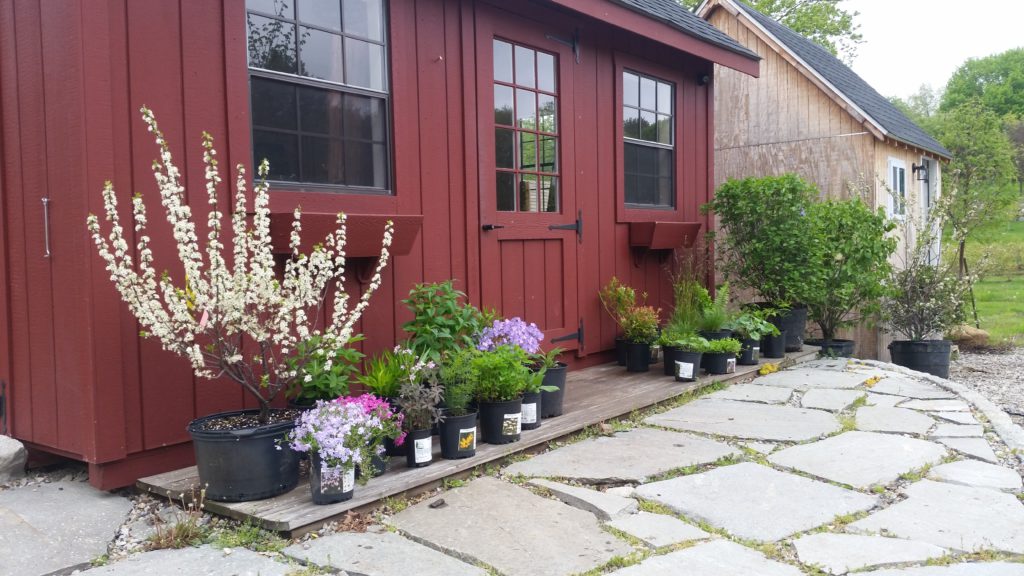The emphasis on using native plants has been on the rise nationally, particularly since the 2009 publication of Douglas Tallamy’s book, Bringing Nature Home. The book explains the link between native plant species and their support of native wildlife.
Birds rely on insects, in particular the caterpillars that are larva of butterflies and moths, for protein that is vital to their own development and to raise young to maturity. Insect species form the base of the food pyramid for birds and other wildlife. Birds, for example, want to feed young a diet high in protein. Insects have a high protein content and are the ideal protein source for bird species. Wildlife populations have subsequently declined with the loss of their insect food source.
Native insects primarily feed upon native plant foliage, through adaptations formed over the millenniums. Most insects are specialists, meaning that they only eat plant foliage they share an evolutionary history with, determined by leaf chemistry, flowering time, physical shape and other plant characteristics. For example, the Monarch Butterfly lay their eggs only on the milkweed plant, Asclepia incarnata, because it is only the leaves of the milkweed plant that Monarch caterpillars can digest upon emerging from their cocoon.


Use of Non-native plants
When native plants are absent and the landscape is dominated by non-native plants, the insect populations decline.

Loss of native plant communities
Many land developmental patterns, that often result in native plant communities (forest, marsh, meadow) being replaced with non-native plant species, have endangered wildlife species to the point of extinction. There has been a precipitous decline in songbirds over the last fifty years. According to an April 2018 report by the Yale School of Forestry and Environmental Studies, approximately forty percent of the world’s bird population is in decline.
Acres of lawn
The quintessential American lawn offers no food or shelter for insects, bees, and birds. With the exception of an occasional clover, the vast acreage of lawn throughout the United States is another primary reason for wildlife’s continued decline and population loss.

Moving forward
Fortunately, there is a resounding message of hope. The environmental destruction can be restored through planting native plants that reestablish a food web that benefits flora and fauna while at the same time creating beneficial habitat and shelter that can be enjoyed by both wildlife and people. The return of some wildlife species, such as native birds, can be visibly noticeable within a short period of time.